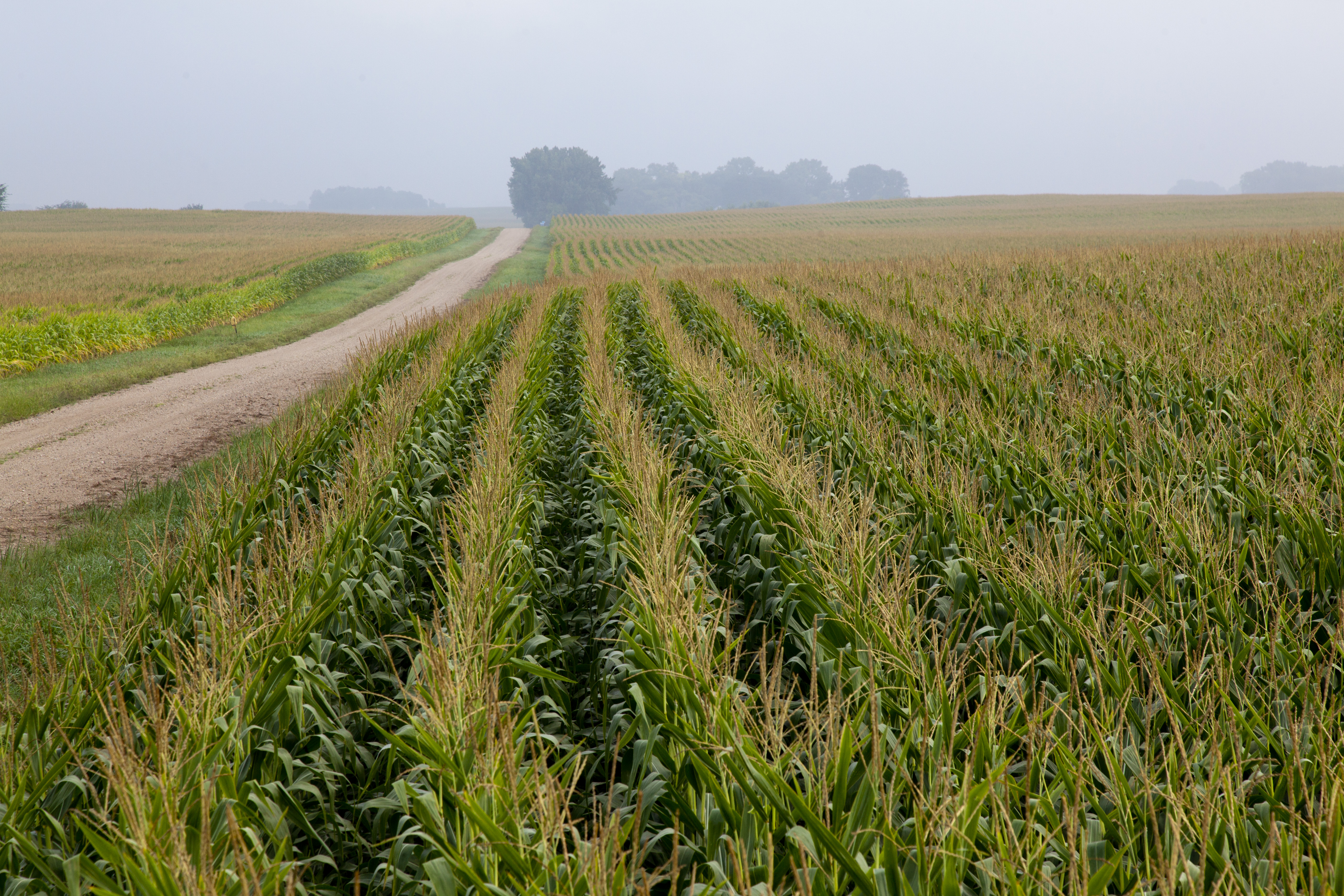Indiana Land Values Leap Higher
Indiana Farmland Values Set New Record With $9,785-Per-Acre Average
MT. JULIET, Tenn. (DTN) -- Indiana farmland values hit record highs in June of 2021 with all classes of farmland seeing sharp increases, respondents to a Purdue University survey said. Cash rental rates didn't increase as sharply as land values, and while they're expected to grow in 2021, their growth may be held in check by surging farm input costs and other COVID-19-related headwinds.
Top-quality Indiana farmland values increased 14.1% on average, setting a new record at $9,785 per acre, according to the annual Purdue Farmland Value and Cash Rents Survey. Average- and poorer-quality land saw sharp gains as well, with average ground increasing by 12.5% to $8,144 per acre and poor-quality ground fetching 12.1% more with an average price of $6,441, according to an annual survey by Purdue University.
"A unique combination of economic forces, including net farm income, expected income growth, crop and livestock prices, interest rates, exports, inflation, alternative investments, U.S. policy, and farmers' liquidity, all played a major factor in the price increase we're experiencing," survey author Todd H. Kuethe, who is also an associate professor and the Schrader Endowed Chair in Farmland Economics, said in a news release.
"Normally, we'll see positive price pressure from one or two market forces; however, this June, survey respondents indicated that all 10 forces we asked them about were putting upward pressure on land values," he said. (For more on what ignited farmland values, please read: https://www.dtnpf.com/…)
The survey respondents -- composed of a mix of farm managers, rural appraisers, land brokers, loan officers, farmers and Farm Service Agency county directors -- expressed optimism that current land price growth will continue through the end of the year, yet at a slower pace than has been seen since December 2020. Statewide, the respondents expect farmland prices to increase by 3.9% for top quality and 4.2% for poor quality by December 2021.
P[L1] D[0x0] M[300x250] OOP[F] ADUNIT[] T[]
Statewide cash rental rates also increased across all land quality classes in 2021. For top-quality land, the average rent jumped from $259 to $269 per acre, or 3.9%. Rents for average- and poor-quality ground grew 4.6% to $227 and $183, respectively.
The survey found that cash rent as a share of June land values decreased slightly in 2021, an indication that cash rents appreciated slower than farmland price.
"Some portion of the difference in appreciation rates may reflect changes in expectations between fall 2020, when 2021 rents were negotiated, and the 2021 growing season," the report stated. "However, at least one respondent suggests that 'fear of input prices for 2022 is going to restrict cash rents going up sharply' in the coming year." (You can read the entire report here: https://ag.purdue.edu/…)
A recent FarmDoc Daily blog post also pointed to the increasing input prices, noting that non-land costs for 2022 for corn and soybeans are projected to be an all-time high. A central Illinois farm used in its example is anticipated to spend $677 per acre to produce corn next year, up from $607 this year. At $413 per acre, soybeans will be $42/acre more expensive to grow than last year.
The crop budget also sees cash rents increasing by $10 per acre in 2022.
Despite higher costs, returns to farmers are still expected to be positive next year, with corn earning $24 per acre to soybeans' $150-per-acre profit. (Check out the full crop budget here: https://farmdocdaily.illinois.edu/….)
"Reasonably optimistic projections can be made for 2022 corn and soybean returns based on projected corn and soybean prices being above 2014-2020 average prices," the blog stated. "A central question then is: How long will higher prices last?"
It suggests that supply responses in Brazil, the U.S., Russia, Ukraine and Kazakhstan will lead to lower prices eventually. It could occur next year if Brazil expands acres and sees favorable weather, but poor growing conditions could extend the supply and demand imbalance. Demand from China will also be an important factor in future prices. (You can find more on how long the current price situation may last here: https://www.dtnpf.com/…)
"A return to 2014-2020 average prices seems quite possible," the post stated, adding that incomes in 2018, 2019 and 2020 were heavily affected by ad hoc government payments such as the Market Facilitation Program. "Higher costs have led to a situation where higher prices and above-trend yields are needed for profitability."
Katie Dehlinger can be reached at katie.dehlinger@dtn.com
Follow her on Twitter at @KatieD_DTN
(c) Copyright 2021 DTN, LLC. All rights reserved.




